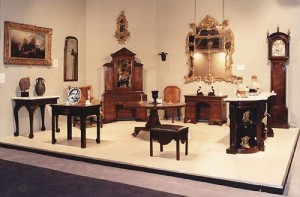
Antique Furniture
<>
Finding the right antique furniture for a room begins with assessing why you prefer to embark upon a hunt for furniture rather than simply making a trip to the nearest mass retailer. Do you really want to undertake an exhaustive and maybe expensive journey to find that authentic antique chest from the Jacobean period? Or will you settle for a reproduction from that time period used to distinguish this style? Maybe it’s not just about the look and fit of that antique desk for the room. Maybe you also want to look upon it in your den and imagine the desperation or elation of a writer or a merchant long gone, whose history you’ll never know, but whose bureau is now lovingly kept in your home.
People that add authentic antique furniture to their homes like the idea of romantic stories being attached to these old pieces. Yes, stories they will never know, but stories just the same. These pieces once belonged to others from different times, with different cultures and mores, but with the same desires, hopes, fears and joy that people experience today. And just like today, these lives from long ago were lived by eating, drinking and laughing at tables, keeping – maybe hiding – clothes and belongings in a chest of drawers, sitting or thinking in the evening in a favorite chair or ambitiously making a living or improving a mind while at a desk. In short, lives were already lived among the antique furniture that is brought into a home.
If you recognize yourself above, then you are a person that knows instinctively that the history of furniture has value. That furniture making is a long-established art -one of the oldest – and that furniture is more than simple function. Wise selection of furniture makes the mundane of our day-to-day life more pleasing, more satisfying. A great house can be spoiled if it is filled with unattractive, ill-fitting furniture. By the same token, a modest dwelling can be made elegant, comforting and inviting by using furniture chosen well for the place and also pleasing to the eye and this is where basic preparation for finding the right antique furniture begins.
When you walk into a modern furniture retailer you most likely will browse around until something catches your eye, or you might look online or in a catalog for the same. You already know the style and craftsmanship that you like. If you can’t quite describe it, no problem in the store, online or browsing a catalog – you’ll know it when you see it. In contrast, this is not the way, i.e. browsing, to efficiently find the right antique furniture for your home.
Sure, you can go to antique shops or outlets and browse around there just like you would at a modern furniture store but you’re shortchanging yourself; you’re stopping short of why you wanted to hunt for antique furniture in the first place – it’s meaning. Some basic preparation can help you find both the style and meaning of the antique furniture you put in your home.
This preparation starts with a basic knowledge of the styles from the various periods of furniture making. You have probably heard of some of these, e.g. Jacobean, Chippendale, William and Mary and Queen Anne to name four. Periods help to classify the contour, material, ornamental work and levels of craftsmanship for old furniture. Also, knowing the date ranges that a period designation approximates for furniture adds personalities, history and mores of the time to the meaning that we attach to the old pieces.
A way to get started is to not be too pedantic about it all. Simply find a good book – there are several good, old books in the library – and get a general familiarity with the major furniture-making periods. Categorize what you learn about each period into the articles made (types of furniture commonly produced, e.g. chests, tables, settees, etc.), contour and style, types of material used, how ornamental designs were produced. Then note for each category characteristics to look for in the specific types of furniture from the period so that you can have a basic understanding that this chest is from the Queen Anne period or this desk is from the Chippendale period, and so on.
It is strongly suggested to find a book on period furniture that has plenty of pictures (not drawings) of the various types of furniture from that period. The pictures should be cross-referenced to the period and hopefully to a description of the unique characteristics of the article in the picture. Use the picture to get an understanding of the contour and style of antique furniture that you want in your home or that will fit the room for which you are seeking it.
Finding the right antique for your home is meaningful as a journey. Like all journeys, basic preparation makes it more enjoyable and when you find that piece that is just right for the room, the preparation you did to find it will make it much more meaningful.
Related Posts







